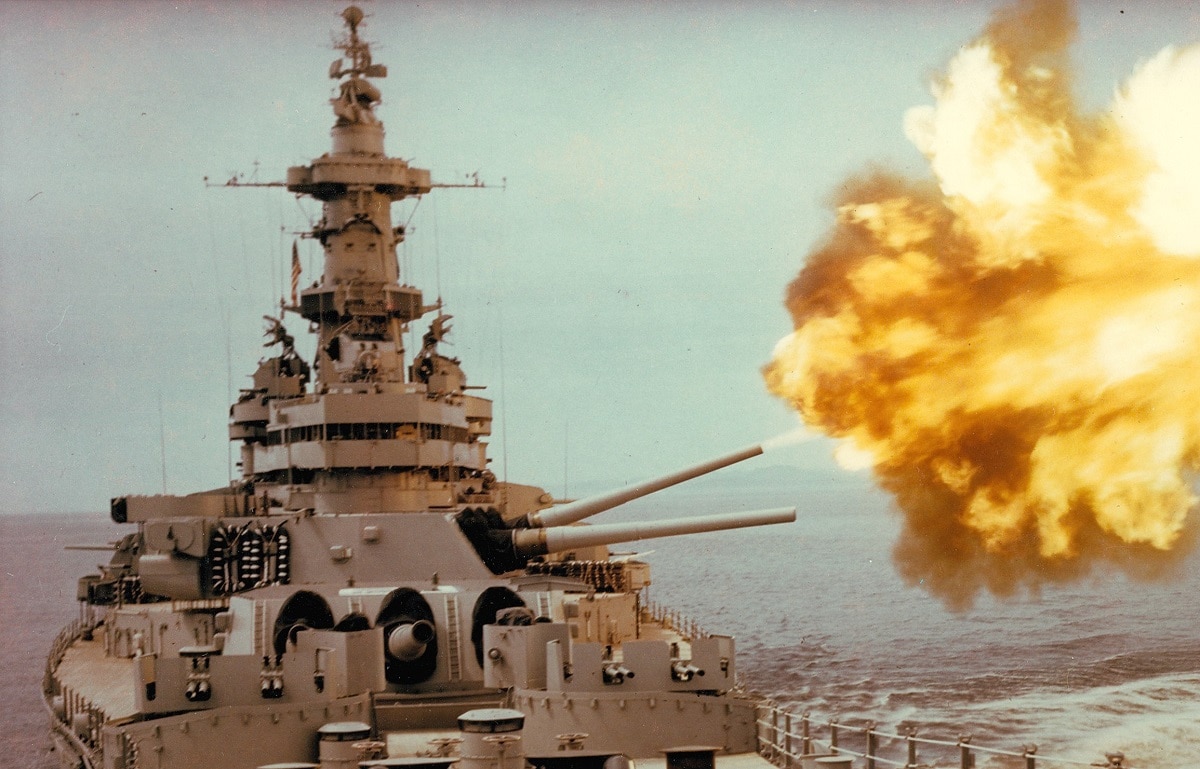From mothballs to museum educating the public on the importance of the U.S. Navy.
In our divided nation today, it can be hard to find common ground on many issues. This is certainly true for those living in Iowa and California – as it is more than miles that separate the two states, yet the two are bound together in a unique way.
While Iowa is 1,200 miles away from the ocean, just prior to America’s entry into World War II, the U.S. Navy’s new class of fast battleships were named in honor of the Hawkeye State. Designed to keep up with carriers yet still be able to strike hard at the enemy, a total of six were ordered with four eventually being built.
Today, the Port of Los Angeles in San Pedro, Los Angeles is now home to the Battleship USS Iowa Museum, which preserves the World War II warship that earned eleven battle stars.
USS Iowa, A Short History
As the first built of the last class of U.S. Navy battleships, USS Iowa (BB-61) was originally commissioned in 1943, and saw service in the Second World War, the Korean War, and throughout the Cold War. She hosted three U.S. presidents, ultimately earning the nicknames “Battleship of Presidents” and “Big Stick.”
President Franklin Delano Roosevelt, who used the warship to transport him partway to the Tehran Conference with Winston Churchill and Joseph Stalin, said of the ship, “from all I have seen and all I have heard, the Iowa is a ‘happy ship,’ and having served with the Navy for many years, I know, and you know, what that means.”
During the Second World War, BB-61 played a crucial role in which she escorted aircraft carrier task forces, bombed shore positions, and even provided artillery support during invasions of enemy-held islands. The battleship would also hit industrial targets on the Japanese homeland islands and was later at their surrender in Tokyo Bay.
Preserving the History
After a long and distinguished career, USS Iowa was decommissioned for her final time in October 1990, and remained in mothballs onboard coasts, until she was rescued from the Suisun Bay “Ghost Fleet” in late 2011 and transformed into a museum ship. She continues to offer daily tours, group programs, educational visits, and even has “gone Hollywood,” serving as a backdrop in multiple movies and TV shows.
The retired battleship has endured the test of the time and is now being transitioned into what will be the future National Museum of the Surface Navy, as part of an effort to raise awareness in how the United States was – and still is – a maritime nation.
“Throughout her active years, the world’s oceans were her home,” said Joleen Deatherage, vice president for development and marketing at the Battleship USS Iowa Museum, told the Los Cerritos Community Newspaper.
“Built in American shipyards by Rosie the Riveter during WWII to ‘make the world safe for democracy,’ she was sailed into harm’s way by American sailors,” added Rear Admiral USN (Retired) Mike Shatynski, who serves as Chairman of the Board for the National Museum of the Surface Navy at the Battleship Iowa. “The USS Iowa reminds us of what is best about America. Together as a country, [she] helped defeat the three worst dictatorships that the world had ever seen.”
Peter Suciu is a Michigan-based writer who has contributed to more than four dozen magazines, newspapers and websites. He regularly writes about military small arms, and is the author of several books on military headgear including A Gallery of Military Headdress, which is available on Amazon.com.

